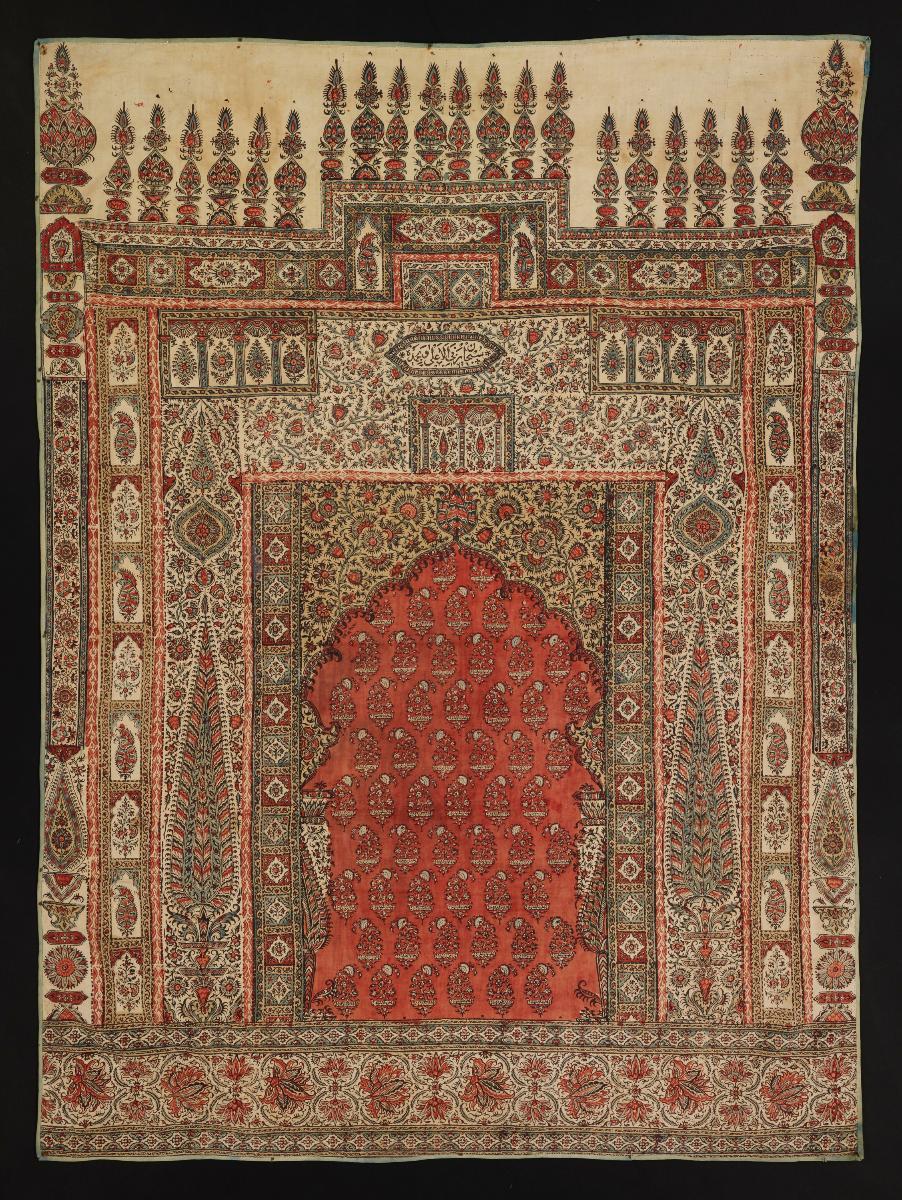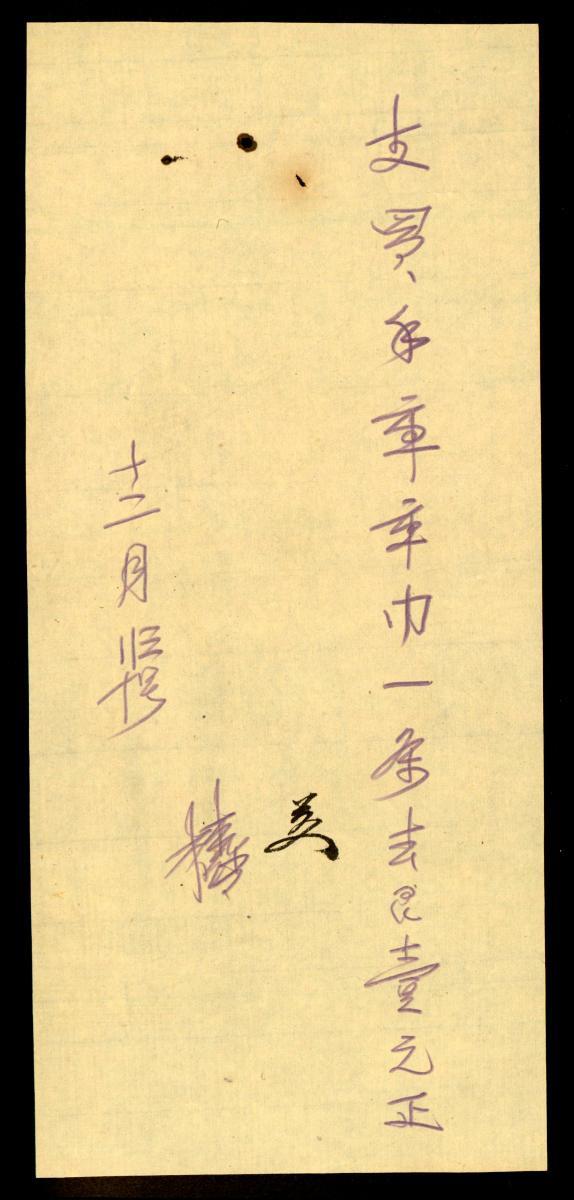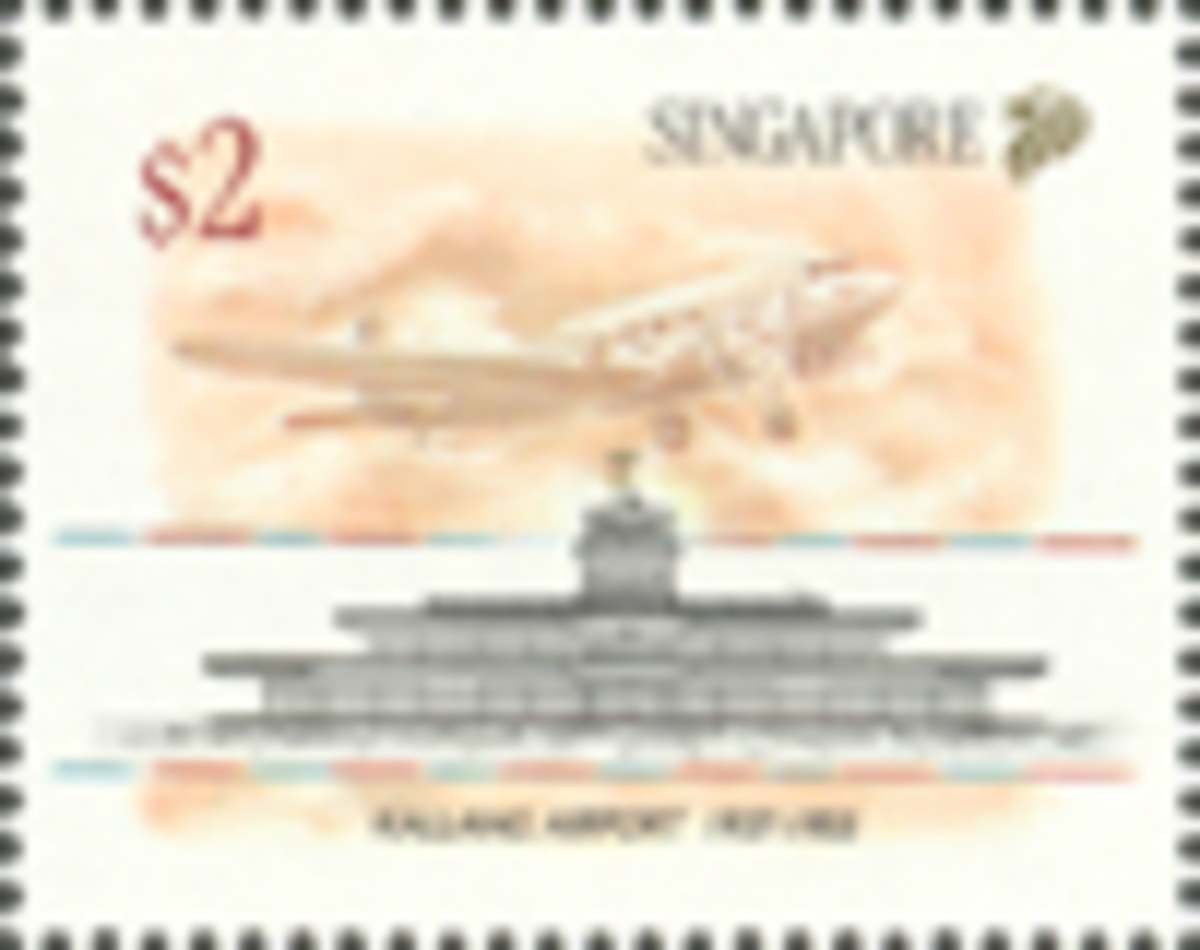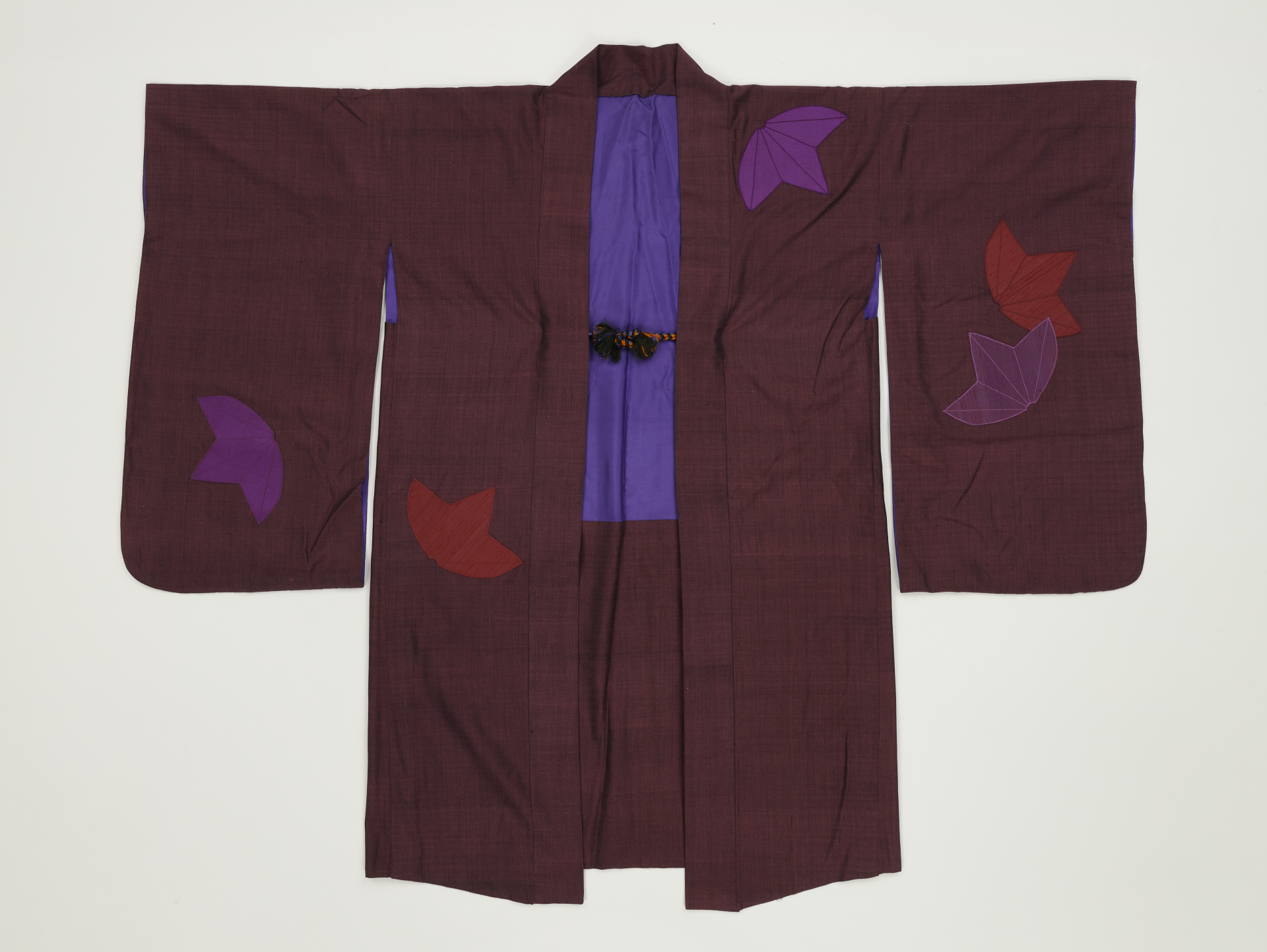Prayer cloths such as this well-preserved example were produced in Machilipatnam (Masulipatam) in Andhra Pradesh state in India for the local Muslim community and for Islamic export markets which included Persia and Indonesia. (Armenian traders were significant players in this trade at the time.)It is of cotton and decorated in the delicate, floral kalamkari technique associated with Machilipatnam.The designs are a combination of being block-printed and hand-drawn onto the cloth with a bamboo pen, which was also used to apply wax resist and mordants.The cloth has an architectural design based on a mihrab (prayer arch). The central red field is populated by Mughal-like stylised poppies, and to each side of the arch a tall spire-like trees which probably are based on the cypress.The example here is unusual in that it include a cartouche of Arabic or Farsi/Urdu script.The textile is backed or lined with a piece of possibly British-made, floral printed cotton. Other examples are similarly backed, suggesting that it was done locally and at the time of manufacture.Related examples are illustrated in Barneset al (2002, p. 87), and Crill (2015, p. 99). Examples made for the Indonesian market are illustrated in Maxwell (2003, p. 344).The example here is in near-perfect condition. It has clear age. There is some minor fraying to the backing cloth but none to the actual prayer cloth itself.















